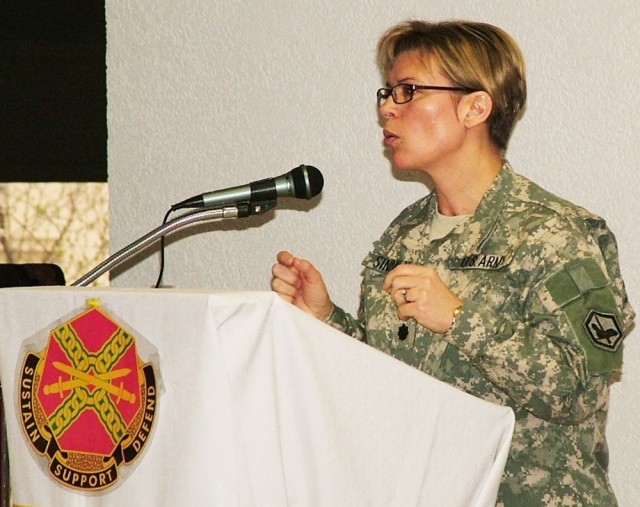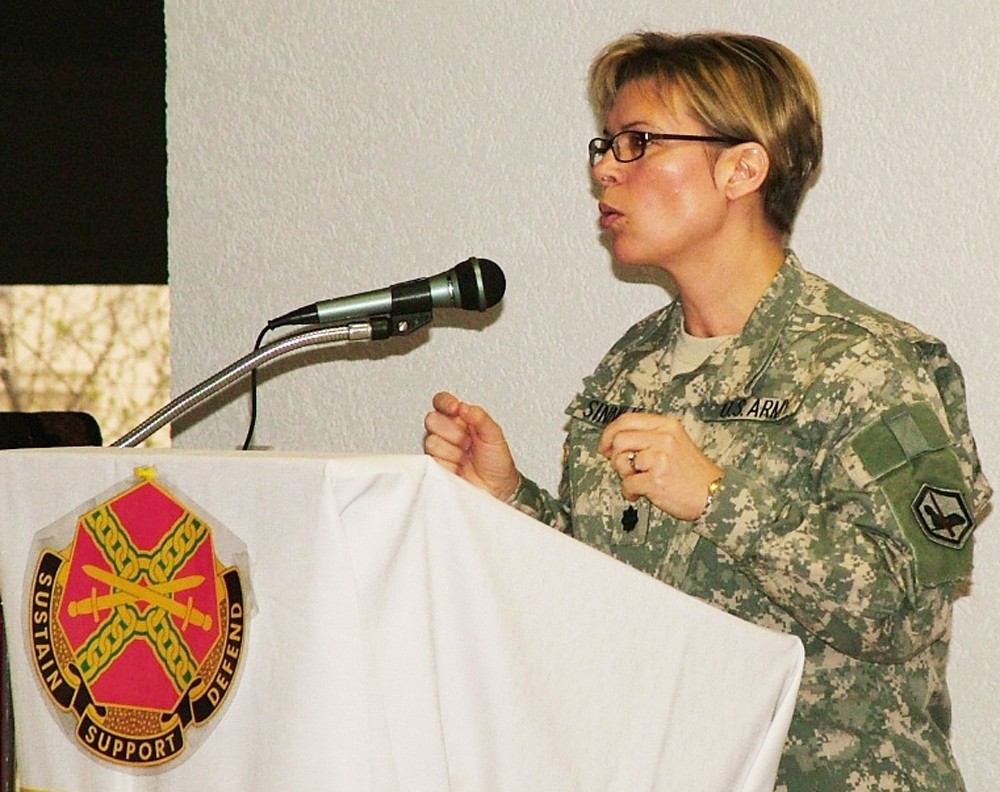DARMSTADT, Germany - Read a copy of the July 1943 edition of Transportation Magazine and you'll get an eye-awakening look at that era's gender beliefs.
According to a 11-point "Guide to Hiring Women" article printed in the publication 65 years ago, male supervisors were encouraged to "give every girl an adequate number of rest periods during the day," and were informed that "general experience indicates that husky girls - those who are just a little on the heavy side - are more event tempered and efficient than their underweight sisters."
Today, it's clearly evident that the contributions of women 65 years later transcend that archaic memo.
According to Lt. Col. Debra Sinnott, guest speaker at the U.S. Army Garrison Darmstadt Women's History Month observance, the article illustrates how attitudes towards women in the workplace have progressed in the last six decades.
Sinnott's remarks for the annual March observance - and the final one at Darmstadt, which closes later this year - focused on women's struggle to contribute.
Overall, the Department of Defense theme for the month was "Women's Art: Women's Vision."
One featured artist at Darmstadt was Crystal Malloy, a retired Department of Defense Dependents Schools-Europe DODDS school teacher, who uses her talents to raise money for the Fischer House in Landstuhl, Germany. Other artists included women who work across U.S. Army Europe, and Soldiers who offered musical tributes. Sinnott supplemented their artistic talents with her vision for the future.
The very opportunity to set aside time to discuss and celebrate Women's History Month, according to Sinnott, is the direct result of progress made in the United States toward women's equality.
"It is important to speak at these events for several reasons," said Sinnott, who is deputy commander of the 66th Military Intelligence Brigade. "First, to realistically portray the history of our progress and to acknowledge the women and men who played an integral part in that progress. I believe this must be done for both our personal and collective histories."
Sinnott shared her own personal history - the story of her families' immigration from Italy to the United States, spurred by her grandfather's idealism. The opportunities presented to her relatives as a result of his decision were the same, regardless of gender, which was unique in 1926.
Sinnott's mother was encouraged by her grandfather to "fight every hardship to accomplish her goals, to seek knowledge, to endlessly debate and act to improve conditions around you - whether they were social, economical, or political."
When her mother left college to work for the Curtis Airplane Plant in North Buffalo, N.Y., she entered a workplace typified in the 11-point memo printed by yesteryear's Transportation Magazine. "One could say that the integration of women into the workplace was similar to merging two different cultures," said Sinnott.
The considerable gains in equality that followed women into the factory, according to Sinnott, could not have come to pass without the contributions of men, like her father, who believed simply that there should be no gender limitations on human contributions.
"We all have a history," she explained, "but it is due in no small part to the enlightenment, legislation and acquiescence of men that our society has changed so dramatically for women. That is not to diminish women's struggles and efforts - but they could not have done this alone."
For Sinnott, the challenge that remains for modern women (and men) is to be fully integrated and accepted as equal architects of society as a whole - without gender bias.
She is thankful that "the Army is one of the most equality-based institutions on the planet."
"I work as a rank and a position - not a gender," Sinnott said, adding that she recognized that not all institutions and communities are yet free of the subtle mental and social struggles that differentiate between male and female contributions.
Now that women have achieved legislative equality, Sinnott challenged both the men and the women in the audience to consider how they will tap into the "incredible opportunity we have been given to contribute to the human collective," and recognize the full potential of humanity, without discrimination.


Social Sharing